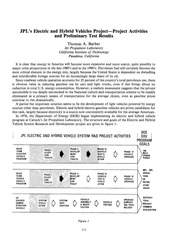Tuffer
New Member
- Joined
- Sep 23, 2019
- Messages
- 9
So ive been searching hi and low for batteries that i can use that will last me a while, Ive come across the Foam batteries by First energy, checked out the Battle born, Ended up buying a rack of Used 13.2 kWh Rack Mount Mega 3.3 Samsung SDI ESS Energy Storage Battery 16S 60 Volt, Which i'm having buyers remorse over. Now i've run in to these Nickel Irons from. https://ironedison.com/nickel-iron-ni-fe-battery
Does anyone have experience with these? Thanks for the input.
Does anyone have experience with these? Thanks for the input.








